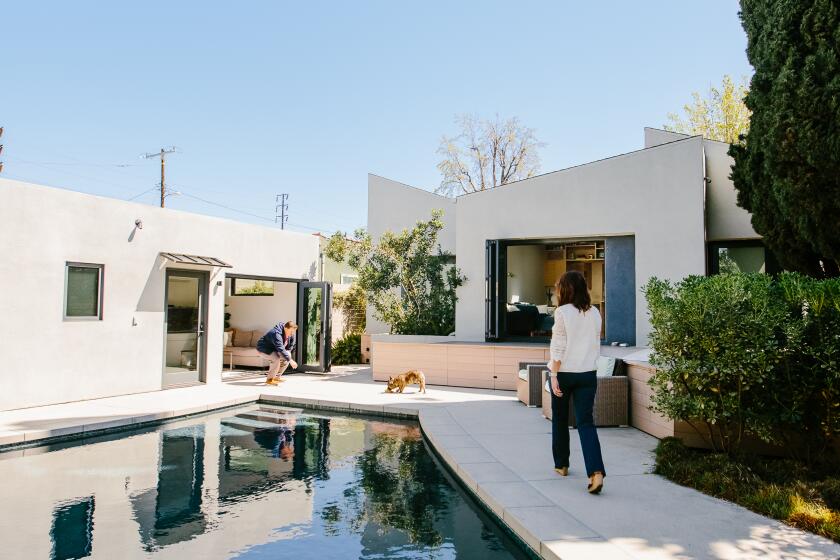Visions taking shape for proposed CleanTech Corridor in downtown L.A.
Visions are developing of what the proposed CleanTech Corridor might look like when it begins to emerge in downtown Los Angeles.
The Southern California Institute of Architecture launched a competition that invited entrants to offer new ideas for the four-mile stretch of land next to the Los Angeles River. The school, known as SCI-Arc, last week announced more than $10,000 in prizes for the winners.
The city-run Community Redevelopment Agency has also asked companies to submit proposals by Dec. 3 for revitalizing a 20-acre section of the corridor.
Los Angeles officials, including Mayor Antonio Villaraigosa, have long planned to convert the dilapidated area into an innovative clean-technology district. Proponents imagine the area as an incubator for start-ups and an industrial park attracting environmentally sustainable companies.
SCI-Arc’s campus, a former freight depot, sits in the planned 2,000-acre CleanTech Corridor space.
“We live in this district and we want a voice in the discussion, a dog in the fight,” said Peter Zellner, a program coordinator at the school. “Until now, it’s been focused from 10,000 feet in the air. We want to talk about the impact on the ground.”
The competition, co-sponsored by The Architect’s Newspaper, attracted 70 entries from 11 countries, including China, Germany and Russia. Jurors included working architects, Princeton University’s architecture dean, a representative from the Los Angeles County Metropolitan Transportation Authority and a Los Angeles deputy mayor.
Participants included landscape architects, urban planners, designers, engineers, environmental professionals and students.
A team from Oslo won $5,000 in the professional category with its project called “UMBRELLA.” Constantin Boincean, Ralph Bertram and Aleksandra Danielak envisioned mushroom-like structures that look like massive street art but are actually solar-powered evaporators. Through a system of evaporation and condensation, the structures would collect and filter sewer water and distribute it through city streets to create green urban landscapes.
Students from the architecture school at the University of Virginia won $2,000 in the student category for a design featuring solar and wind power as well as treated water gathered from community sites.
tiffany.hsu@latimes.com
More to Read
Sign up for Essential California
The most important California stories and recommendations in your inbox every morning.
You may occasionally receive promotional content from the Los Angeles Times.











